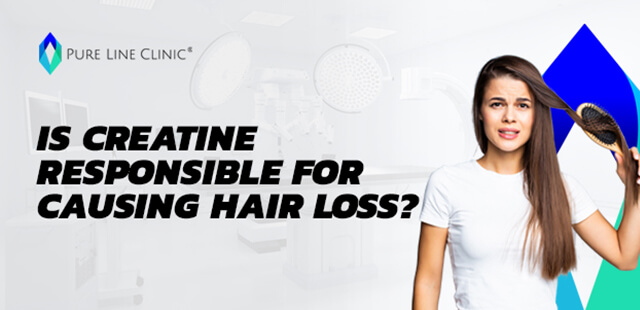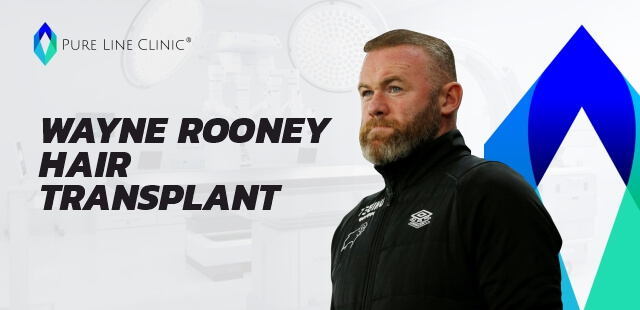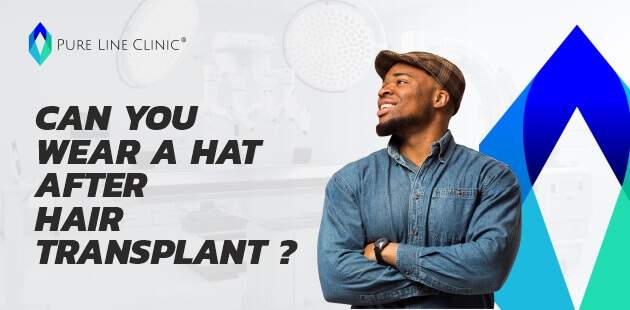
Ultimate Hair Transplant FAQ Guide
Embarking on the journey to a hair transplant can be both exciting and daunting, and it’s natural to have numerous questions about the procedure. At Pure Line Clinic ® in Turkey, we understand the importance of providing comprehensive information to our clients, helping them make informed decisions about their hair restoration journey. In this extensive guide, we will address the most frequently asked questions related to hair transplantation, offering insights and expertise to put your mind at ease.
What is hair transplantation, and how does it work?
Hair transplantation is a surgical procedure that involves moving hair follicles from a donor area (typically the back or sides of the head) to a recipient area where hair is thinning or balding. The procedure aims to restore hair growth and improve the overall appearance of the scalp. Hair transplantation works by relocating healthy hair follicles to the affected area, allowing them to grow new hair and achieve a fuller, more natural look.
Am I a suitable candidate for a hair transplant?
Ideal candidates for hair transplantation are individuals with:
- Sufficient donor hair density to provide an adequate number of grafts
- Realistic expectations about the procedure’s outcome
- Good overall health, as certain medical conditions or medications can impact the success of the transplant
A consultation with one of our experienced surgeons will help determine if you’re a suitable candidate for hair transplantation.
What hair transplant techniques are available at Pure Line Clinic ®?
At Pure Line Clinic ®, we offer two advanced hair transplantation techniques:
- Follicular Unit Extraction (FUE): A minimally invasive method that extracts individual hair follicles from the donor area and transplants them to the recipient area. FUE leaves minimal scarring and has a faster recovery time compared to older techniques.
- Direct Hair Implantation (DHI): DHI utilizes a specialized pen-like device, called a Choi Implanter, to transplant hair follicles with precision and control. This technique offers natural-looking results and reduces the risk of graft damage.
The duration of the hair transplant procedure depends on several factors, including the number of grafts required, the chosen technique, and individual circumstances. In general, the procedure can take anywhere from 4 to 10 hours, and in some cases, may be split over two consecutive days.
Is hair transplantation painful?
Hair transplantation is performed under local anesthesia, which means you should not feel any pain during the procedure. You may experience mild discomfort during the administration of anesthesia, but the area will be numb throughout the surgery. After the procedure, you may experience some soreness and discomfort in the donor and recipient areas, which can be managed with prescribed pain medications.
The recovery process following a hair transplant varies for each individual but generally includes the following stages:
- Mild swelling and redness in the donor and recipient areas for the first few days
- Scab formation around the transplanted grafts, which typically fall off within 7-10 days
- Initial shedding of transplanted hair within the first few weeks, known as “shock loss”
- New hair growth beginning around 3-4 months post-surgery, with noticeable improvements by 6-9 months
- Full results achieved within 12-18 months, depending on individual factors
The results of a hair transplant are intended to be permanent, as the transplanted hair follicles are resistant to the hormone dihydrotestosterone (DHT), which causes hair loss. However, it’s essential to note that hair transplantation does not prevent future hair loss in the existing hair
Modern hair transplant techniques like FUE and DHI are minimally invasive and designed to minimize scarring. With FUE, small, round scars may be present in the donor area, but they are usually not noticeable and can be easily concealed by surrounding hair. DHI leaves even less visible scarring due to the precise implantation process.
Yes, individuals with gray or curly hair can still undergo a hair transplant. Our experienced surgeons are skilled in handling various hair types and will adjust the technique accordingly to ensure optimal results. During your consultation, our surgeons will discuss any unique considerations related to your hair type.
Several factors can influence the success of a hair transplant, including:
- The experience and skill of the surgeon
- The quality of the donor’s hair
- The patient’s overall health and adherence to post-operative care instructions
- The patient’s lifestyle, including diet, stress management, and hair care routine
At Pure Line Clinic ®, our team of highly skilled and experienced surgeons prioritizes patient care and satisfaction, utilizing advanced techniques and personalized treatment plans to optimize the success of each hair transplant.
Yes, women can undergo hair transplantation. While hair loss is more common in men, many women also experience hair thinning or loss due to factors such as genetics, hormonal imbalances, or medical conditions. Female hair loss patterns differ from those in men, so it’s essential to consult with a skilled surgeon who is experienced in treating women to ensure the best results.
The cost of a hair transplant at Pure Line Clinic ® varies depending on factors such as the number of grafts required, the chosen technique, and any additional treatments that may be necessary. During your consultation, we will provide a personalized quote based on your specific needs and treatment plan.
It’s generally safe to wear a loose-fitting hat or use hair styling products after a hair transplant. However, you should wait at least one week after the procedure to avoid disturbing the newly transplanted grafts. Be sure to follow your surgeon’s specific post-operative care instructions regarding when and how to safely wear a hat or use hair styling products.
You should avoid strenuous activities and exercise for at least 20 days following your hair transplant to minimize the risk of complications and ensure proper healing. Light activities, such as walking, can usually be resumed within a few days, but consult with your surgeon before resuming any exercise routine.
Conclusion
We hope this comprehensive FAQ guide has provided valuable information and insights into the hair transplant process. At Pure Line Clinic ® in Turkey, we are dedicated to offering the highest quality hair restoration services, ensuring our clients receive the best possible care and results. If you’re considering a hair transplant or have further questions, contact us today to schedule a consultation with our experienced team of hair transplant specialists.

After a Hair Transplantation Procedure
Patients need to pay attention to many issues to get the best result in the post-hair transplant process.

Is Hair Transplant Safe?
In general, a hair transplant is a safe surgery, however like with any surgical process, there is always a tiny risk of: bleeding. infection. a hypersensitivity to the anesthetic.

Alopecia Risk Factors and What to do Them
Alopecia is not always caused by genetics, although people with a family history of alopecia are at a higher risk of acquiring some kind of alopecia.

Is Creatine Responsible for Causing Hair Loss ?
Creatine is utilized in hair strengthening treatments. But, does taking creatine make you lose your hair?

African American Hair Transplant
How to get natural hair transplant results for African Americans by addressing unique hair characteristics, the benefits of FUE, and Pure Line Clinic’s specialists who are experts in customized plans to restore density and confidence.

Wayne Rooney Hair Transplant
Our hair specialists believe Wayne Rooney underwent at least one hair transplant procedure, based on his ‘before’ and ‘after’ photos, which show tell-tale signs of follicle implantation along the front hairline.

How Much Does Hair Transplant Cost in Turkey?
Have you been looking to have a hair transplant for a while and you think how much it will cost in Turkey? In this article, we are talking about hair transplant costs in Turkey.

Does Minoxidil Work?
Minoxidil is readily absorbed and begins to operate almost immediately to enhance blood circulation in your scalp and speed up your natural hair growth cycle.

How Long Does a Hair Transplant Last?
It is important to get your hair transplant performed by a qualified and reputable hair transplant specialist if you want it to last a lifetime.

Can You Wear a Hat After Hair Transplant?
Most of specialists will advise you to hold off wearing a hat or cap for at least ten days. Your transplanted grafts must root in the balding areas for 7–10 days.

Can Stress Cause Hair Loss ?
The quick answer is that stress can cause to hair loss. Telogen effluvium, alopecia areata, and trichotillomania are three kinds of hair loss that can be induced (or made worse) by stress. Stress-related hair loss is usually transient, so you

What is the Microscope Method for Hair Transplant ?
Hair transplants can perform in many different methods. The microscope method means analysing the most productive and healthy hair grafts under a microscope before a hair transplant and planning the operation accordingly.

What is Icegraft Method ?
IceGraft hair transplantation method is a hair transplantation procedure wherein the cold application technique protects hair follicles.

Shock Hair Loss After Hair Transplant
Shock hair loss occurs between the second and eighth weeks after a hair transplant surgery. At the point when your new hair enters a resting stage, the hair is shed.

Hair Transplant Trypophobia
Around 10 million people in the UK are thought to have phobias, with trypophobia affecting one in every six adults. If you feel uncomfortable, anxious, or afraid when you see clusters of small holes together, you may be trypophobic.